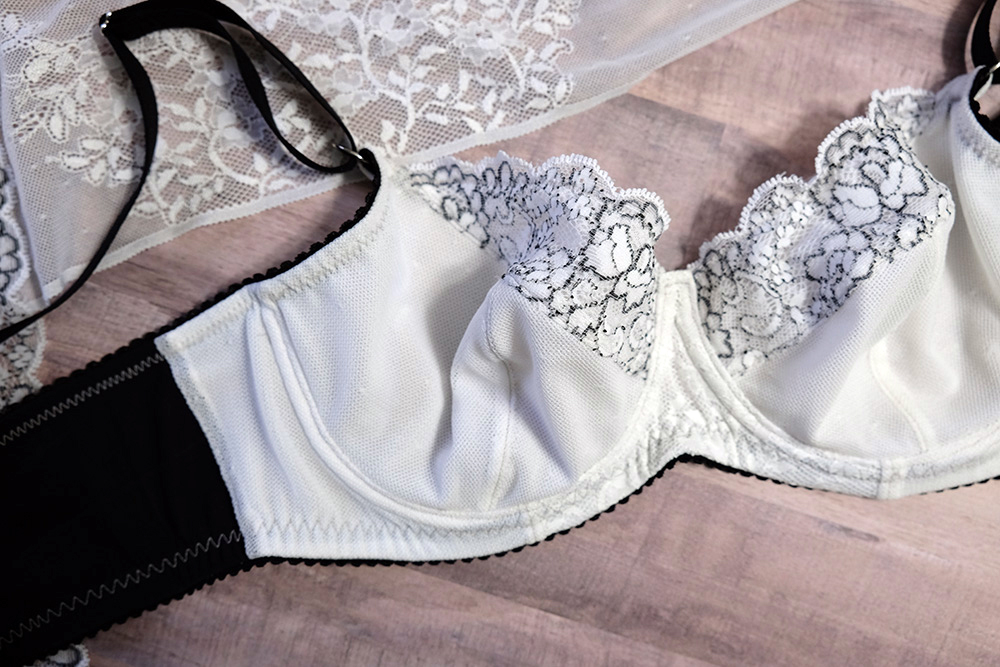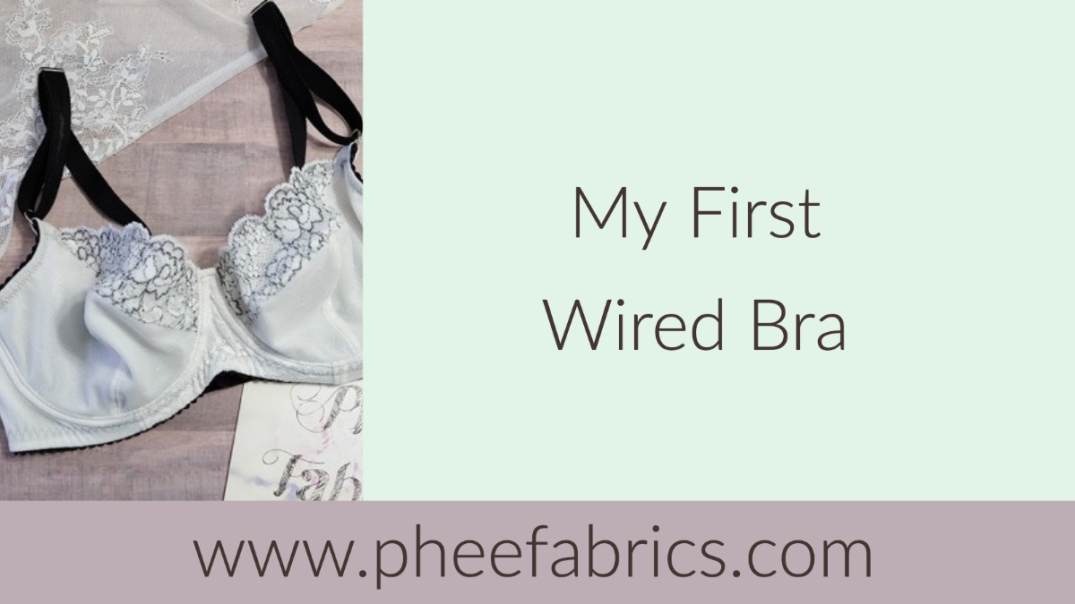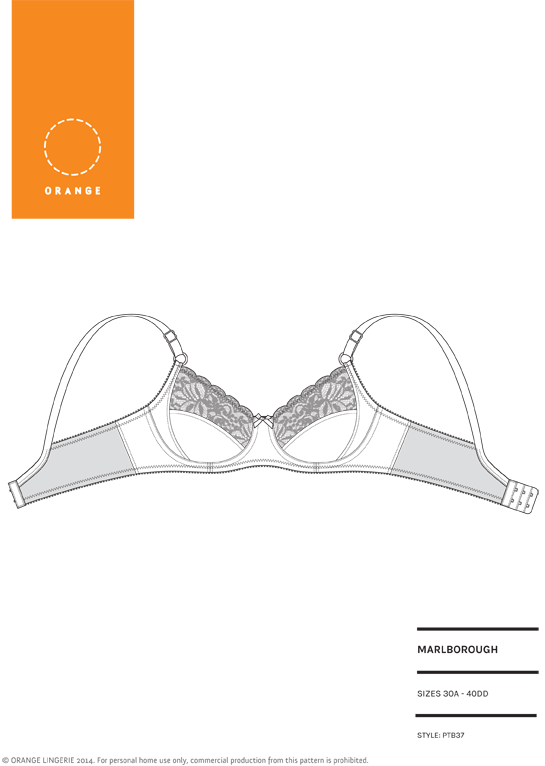It appears to be bra month around here at Phee Fabrics if you haven’t noticed already. I started off with a pattern that has been in my stash for a couple of years, then once I received my lace realized that it wasn’t going to work for my pattern. So I set to find a different pattern because I had a look I was going for, and had to use this beautiful black and white lace.

I then decided to use Cloth Habit’s Harriet Bra Pattern in view C, it comes in sizes 28-41 A-H. I used the Cloth Habit uses the UK method for bra sizing, and provides a sizing guide on their site so you can figure out if the pattern will work for you before you buy. Since I haven’t worn a real bra in far too long, my closest thing to a real bra is from Athleta and comes in a size medium made for cups A-C, so I’m not sure how to compare the sizes. I made a size 32DD, and the fit worked out pretty well, although I did find the band a tad tight.

With this being my first underwire bra that I’ve sewn, and first lace item, I made a lot of mistakes with the actual sewing (I’ll share some tips at the end of my post so you don’t make the same ones). I used Phee’s Heavy Duty Underwires, which I initially ordered in what I thought was my bra size, plus one size over and one size under. I found out that the largest of the three would work for only my right breast, and it was really easy to send back the other 2 and get the next 2 sizes. I loved that I wasn’t stuck with wires that wouldn’t work for me and I got the wires I did need.

I got a little scissor happy and started cutting into my lace and quickly realized it wasn’t going to look the way I wanted it to. So I ordered some additional 9” wide white lace to use for the rest of the cups and the cradle. I used a lot of different materials on this bra, but with them all coming from Phee, they worked together beautifully. I wanted to pull from the black in the lace at the top of the cups, so I opted to use black notions and black powernet for the wings of the bra. I love how they all come together.

Materials Used
Fabrics/Laces:
- Upper cup lace: Black and White 6” Stretch Lace Trim
- Lower cup lace & front band: White 9” Wide Lace
- Lining: White Powernet
- Bridge Lining: 40 Denier Tricot in White
- Back Wings: Black Powernet
Notions:
- 2×3 Bra Hook and Eye Fastener in Black
- 3/8” Double Plush Picot Elastic in Black
- 5/8” Double Plush Picot Elastic in Black
- 5/8” Silver Metal Ring and Slider Set
- Plush Bra Strap Elastic in Black
- Plush Underwire Casing in White
Tips
- Follow the instructions on the pattern, and if they don’t make sense, then see if your pattern maker has a photo tutorial on their website. I don’t suggest trying to make things up as you go, that’s where I got in trouble. I decided to not follow the instructions and it made things really hard in the end. Cloth Habit does have a great Sew Along if you need more help.
- The Harriet calls for a 1/2” band elastic, I didn’t pay any attention to this, and I should have lengthened the seam allowance on the cradle and band to account for this and make for easier sewing.
- Don’t stretch elastic when it says hold taunt, I did this on my clear elastic at the top of my cup on my scalloped elastic, and now it’s not smooth, it pulls in on my breasts.
- Practice stitches on scraps of the same lace/powernet/fabric combos before actually sewing on your bra. I don’t know the last time I’ve used my seam ripper as much as I did on one project as I did on this bra. And trying to take seams out of a lace bra is not the easiest.
- When sewing your hook and eye on, make sure they are facing the correct direction before sewing. I accidentally sewed my hook on so that it faces out.
Happy bra sewing!
Note: This post contains affiliate links to products. All opinions and thoughts are my own. I may receive a commission for purchases made through these links.


















